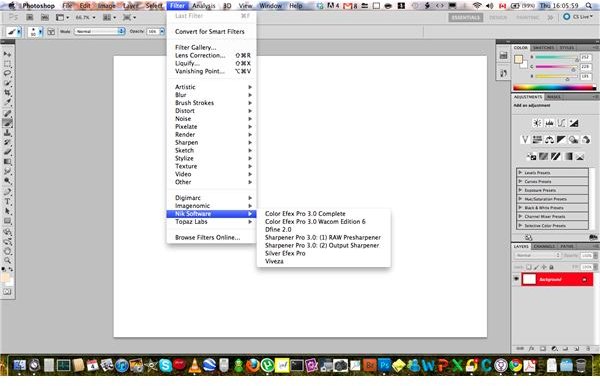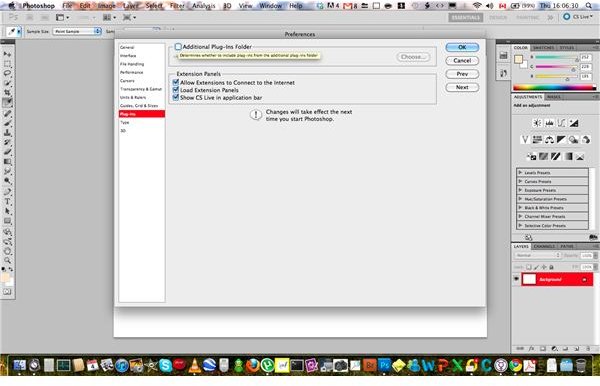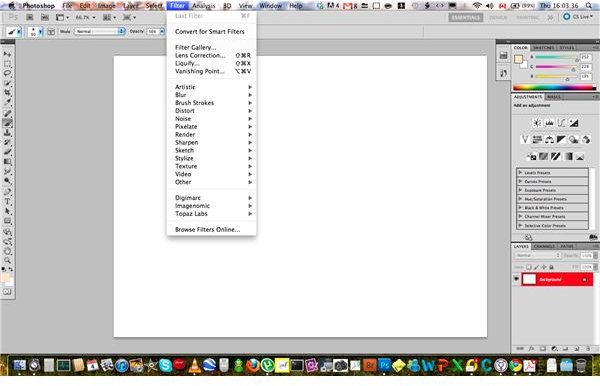Learning How to Install Photoshop Plugins: Quick and Easy Photoshop Tutorial
Introduction
With every version of Photoshop the built in features are getting better. Photoshop CS5 now has phenomenal noise reduction, HDR processing, and much more. But despite all the power that comes native to Photoshop, there are always going to be extra features that users are only going to get from third-party filters. Whether your filter of preference is the Nik Software plugins, one of the Topaz Labs plugins (Topaz Adjust is amazing), noise reduction software, or otherwise, all you want to do is painlessly get them up and running. This article will show you just how to do that. With an easy to follow step-by-step tutorial (with screenshots) you will have your favorite Photoshop plugins up and running in no time.
What Plugins Are and Where to Get Them
A Photoshop plugin is essentially a script that is put into the application which further simplifies the process of creating/editing your image. It allows you, with ease and simplicity, to get more out of Photoshop and to help you create your works of art. Depending on what your cup of tea is you can find innumerable amounts of Photoshop plugins out there. If you are looking for plugins which don’t hurt your wallet you can check out these top 10 free Photoshop plugins or read Where to Get Free Photoshop Plugins. There are also a slew of Photoshop plugins which are not free but can really take your photo editing to the next level. Some of these are, but are not limited to, many of the plugins offered by Topaz Labs, the Nik Software suite (especially Nik Silver Efex Pro), and Genuine Fractals. In other words, third-party plugins are most definitely not the limiting factor here and once we are done this tutorial, neither will their installation!
What Kinds of Files do Plugins Come In?
When searching the multitude of resources available to us for plugins, free or commercial, you will likely come across several file formats that plugins come in. The easiest one to deal with is when you download your plugin and it comes in a *.exe (or *.pkg on a Mac) file. You may have to unzip a file first (or mount the *.dmg on a Mac), usually by double clicking, but after that the installation of the plugin is simple. Double-click on your file and follow the installers instructions.
The other possible file format(s) for plugins, although not difficult, require a couple of extra steps. If the plugin file that you have downloaded comes with the extension “.plugin” or any variant of “.8b*” you need to place the plugin in a specific folder.
“Installing” the Plugins and Verifying Them
While Photoshop is closed, copy the “.8b*” or “.plugin” file (and encompassing folder) from its downloaded location into the “Plug-ins” folder of your specific setup. For a Mac this is generally in “Applications\Adobe Photoshop CS5\Plug-ins” and for Windows this is “Program Files\Adobe\Adobe Photoshop CS5\Plug-ins” locations. If you have installed Photoshop in a different location than the default, these paths may be slightly different.
Once you have the plugins placed in their folder, go ahead and open up Photoshop. Now when you go to the Filter tab in Photoshop, your folder containing the plugin files should be there. In the series of screenshots below you will see that before the Nik Software package wasn’t installed as a plugin but now it is. If there is a license key to put in to verify a purchase, it should ask you the first time you open the plugin. If you don’t like keeping your third-party plugins in the regular applications folder, you can give Photoshop a secondary plugins folder by going to Photoshop > Preferences > Plug-Ins, clicking the “Additional Plug-Ins Folder” option, and choosing the folder where they are kept.
Photoshop Plugin Installation




Conclusions
During this tutorial you have seen why you may consider third-party Photoshop plugins, what file formats they come in, and how to install Photoshop plugins. Very often it will be as simple as double-clicking on your operating system’s installer file (.exe or .pkg) but sometimes you may have to move the plugin folders containing the plugin into the Photoshop plugin folder. No longer is your photo editing limited by not knowing how to install plugins for Photoshop.
